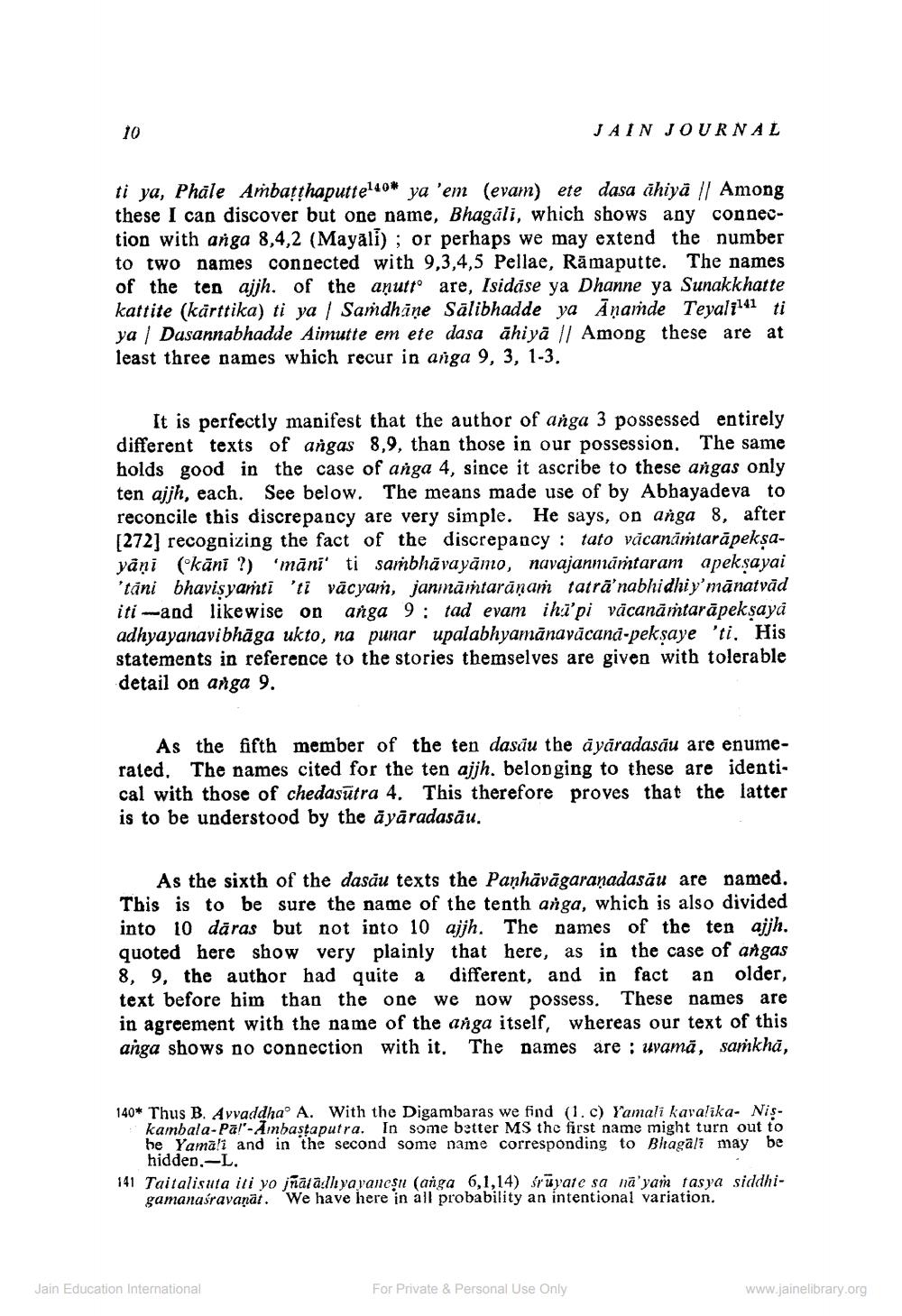________________
10
ti ya, Phale Ambaṭṭhaputte140* ya 'em (evam) ete dasa ahiya || Among these I can discover but one name, Bhagāli, which shows any connection with anga 8,4,2 (Mayali); or perhaps we may extend the number to two names connected with 9,3,4,5 Pellae, Ramaputte. The names of the ten ajjh. of the aṇutt are, Isidase ya Dhanne ya Sunakkhatte kattite (kärttika) ti ya Samdhane Salibhadde ya Anamde Teyali11 ti ya Dasannabhadde Aimutte em ete dasa ahiya || Among these are at least three names which recur in anga 9, 3, 1-3.
JAIN JOURNAL
It is perfectly manifest that the author of anga 3 possessed entirely different texts of angas 8,9, than those in our possession. The same holds good in the case of anga 4, since it ascribe to these angas only ten ajjh, each. See below. The means made use of by Abhayadeva to reconcile this discrepancy are very simple. He says, on anga 8, after [272] recognizing the fact of the discrepancy: tato vācanāṁtarāpekṣayāņi (kāni ?) 'māni' ti sambhāvayāmo, navajanmāṁtaram apekṣayai 'tani bhaviṣyamti 'ti vācyam, janmämtarāņam tatra'nabhidhiy'mānatvād iti-and likewise on anga 9 tad evam iha'pi vacanāṁtarāpekṣaya adhyayanavibhāga ukto, na punar upalabhyamānavācana-pekṣaye 'ti. His statements in reference to the stories themselves are given with tolerable detail on anga 9.
As the fifth member of the ten dasau the āyāradasău are enumerated. The names cited for the ten ajjh. belonging to these are identical with those of chedasutra 4. This therefore proves that the latter is to be understood by the āyāradasāu.
As the sixth of the dasău texts the Paṇhāvāgaraṇadasău are named. This is to be sure the name of the tenth anga, which is also divided into 10 dāras but not into 10 ajjh. The names of the ten ajjh. quoted here show very plainly that here, as in the case of angas 8, 9, the author had quite a different, and in fact an older, text before him than the one we now possess. These names are in agreement with the name of the anga itself, whereas our text of this anga shows no connection with it. The names are uvamă, samkha,
140* Thus B. Avvaddha A. With the Digambaras we find (1. c) Yamali kavalika- Niskambala-Pal-Ambaṣṭaputra. In some better MS the first name might turn out to be Yamali and in the second some name corresponding to Bhagali may be hidden.-L.
141 Taitalisuta iti yo jñātadhyayaneṣn (anga 6,1,14) śruyate sa na'yam tasya siddhigamanasravanät. We have here in all probability an intentional variation.
Jain Education International
For Private & Personal Use Only
www.jainelibrary.org




